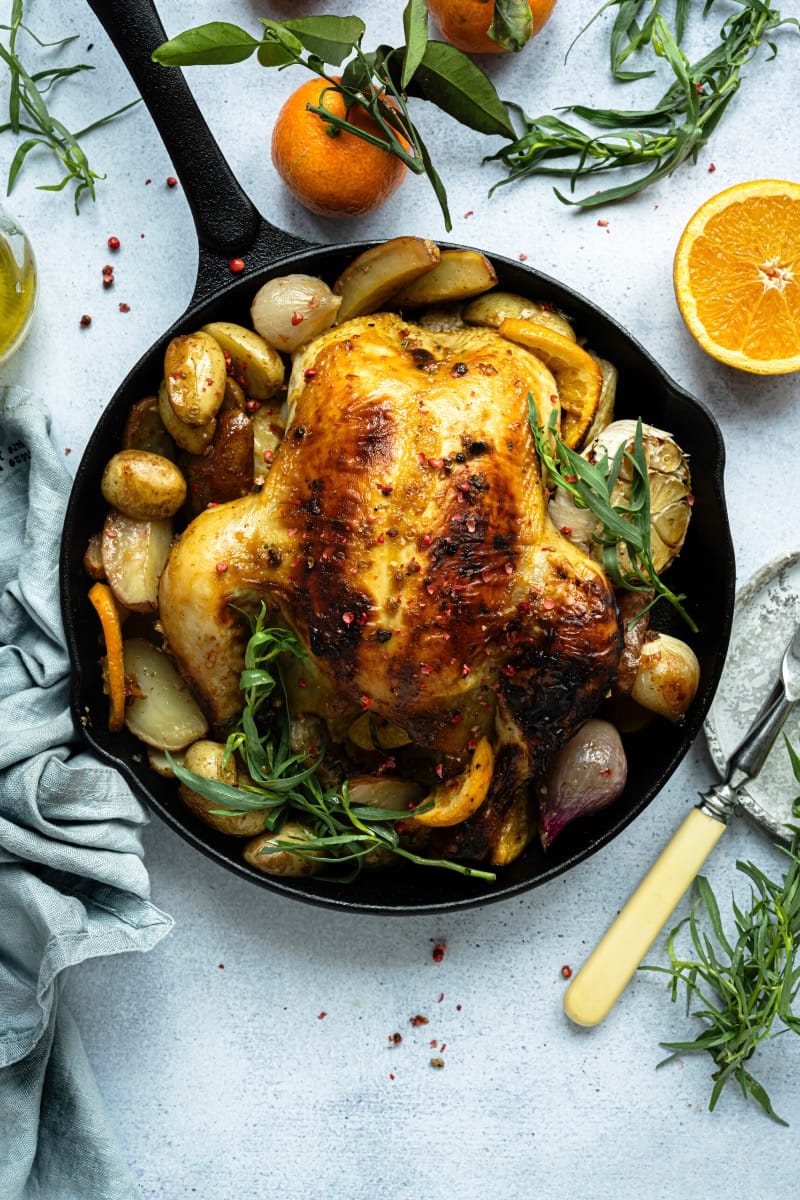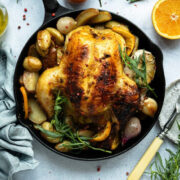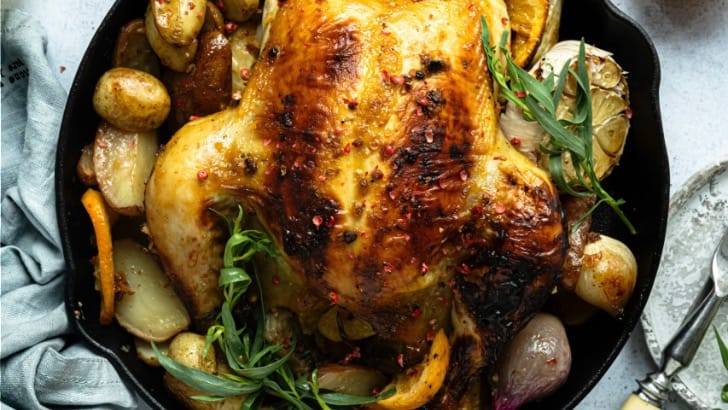Cornish hens are a gourmet recipe that you could try out at home for any special occasion. Due to the fact that Cornish game hens are small, cook quickly in the oven, and they’ll have everyone thinking you labored so much over them due to the wonderful tasting results.
A Cornish hen recipe is a must-try, but only if you have the right tips and recommendations at your disposal to ensure desirable results. This article is here to provide all that, so we advise that you pay close attention. Your end results will definitely be worth it.

Tips for cooking a cornish hen
The following tips and recommendations will help you get the best out of your Cornish hen recipes:
Cornish hens and where to find them – Cornish hens are a popular chicken breed that originated in Cornwall, England. They weigh roughly 2 pounds instead of 4 or more pounds for a conventional chicken.
Cornish hens are fully matured when they are smaller in size, and their meat is extremely soft, guaranteeing delicious results when cooked properly. They are frequently preferred over larger birds since they are easier to prepare and cook. They’re frequently found in the freezer beside the frozen turkey section in grocery stores.
The ingredients you’ll need – You can experiment with different ingredients to achieve different flavors in your Cornish hen recipes:
- A rub: The skin of the Cornish hens may be flavored with a simple blend of olive oil and herbs. You can use whichever herbs you choose (or have readily available).
- Vegetables: Add extra squash, such as butternut, acorn, or zucchini. Arrange the vegetables around the hens, remove the birds as soon as they finish cooking, and toss the vegetables into the succulent juices for added flavor.
- Herbs: For a very flavorful skin, nestle sprigs of fresh rosemary, thyme, or oregano among the vegetables, or brush the outside of the bird with your favorite seasoning blend.
Seasoning tips – Try some of these seasoning suggestions for added flavor in your Cornish hens:
- Rub some salt into the cavity of the hens for optimal results, as this will assist draw more moisture out of the meat while it roasts.
- Some sprigs of fresh herbs or a lemon slice can also be placed in the cavity of the Cornish hens.
- Conserve bacon grease; this is an excellent method to replace olive oil with bacon grease, adding an extra but subtle layer of flavor.
How to cook Cornish hens – Cornish hens are one of the easiest elegant dinners ever, despite appearing otherwise. Simply follow these guidelines to prepare them:
- Brush the Cornish hens with oil and season with salt and pepper if preferred. Place the bird on a pan with its wings tucked under it, and vegetables should be placed around the Cornish hens.
- Bake the Cornish hens, uncovered, as directed in the recipe below.
- Remove the birds from the oven and set them aside to cool before serving.
Don’t overcook – The most crucial thing to bear in mind is that the Cornish hens, just like with chicken, should be properly cooked but not overcooked. Insert a meat thermometer in the thickest portion of the hen’s breast, away from any bones. Do this once the hens are taken out of the oven, and make sure the internal temperature reaches 165°F on the meat thermometer.
Check the doneness of your Cornish hens with a digital instant-read thermometer. Doing this eliminates guesswork, overcooking or undercooking, or having to slice into the birds to check for doneness, resulting in the loss of all the juices contained in the hens.
If you want extra crispy Cornish hens – About 12 to 24 hours before you plan to roast your Cornish hens, season them with salt. Before applying the dry rub, remove any extra moisture and salt.
Other things to take note of – To make cleanup easier, line the baking sheet pan with foil underneath the wire rack. The vegetables and herbs in the hens’ cavities will flavor the meat as it cooks. If the hens are crowded on the oven trays, the skin will not crisp up correctly, and they will take considerably longer to cook.
Cooking time for a cornish hen
The ideal timing for Cornish hen recipes can be gotten from the guidelines in the table below:
| Cooking procedure | Cooking time |
| Roasting Cornish hens at 425 F | 50 to 60 minutes |

Roasted cornish hens (4 servings)
Ingredients
- 2 whole Cornish hens, about 1 ½ lb each
- 2 sprigs of rosemary
- 4 sprigs of thyme
- 1 large onion, cut in quarters
- 6 cloves of garlic
- 1 lemon, cut in slices
- 2 tablespoons of olive oil
For the dry rub
- 1 teaspoon of salt, or enough to taste
- 1 teaspoon of pepper, or enough to taste
- 1 tablespoon of Italian seasoning
- 2 teaspoons of smoked paprika
- 1 teaspoon of garlic powder
- ¼ teaspoon of red pepper flakes
Instructions
- In a small mixing bowl, combine all of the dry rub ingredients.
- Using paper towels, pat the hens dry and generously season both inside and out with the dry rub.
- Preheat the oven to 425 degrees Fahrenheit.
- Combine the rosemary, thyme, garlic, onion, and half of the lemon slices in a roasting pan. Drizzle the olive oil over the Cornish hens and place them in the roasting pan over the herbs and onions.
- Bake the Cornish hens in the roasting pan for 50–60 minutes, or until an instant-read thermometer inserted into the thickest portion of the breast registers 165°F.
- Allow the birds to rest for 20 minutes after removing them from the oven. Serve over mashed potatoes with extra thyme, lemon wedges, and rosemary.
Notes
- Leftover roasted Cornish hens will keep in the refrigerator for 3 to 4 days or in the freezer for 1 to 3 months. In the microwave, it reheats beautifully. To keep the chicken from drying out, save some of the pan drippings and reheat the chicken with the drippings in a skillet.
If you’d like to check out more ideas for cooking with Cornish hens, then this video recipe may interest you.
